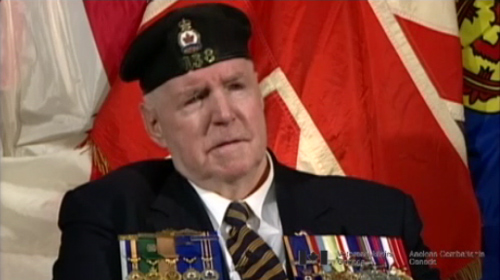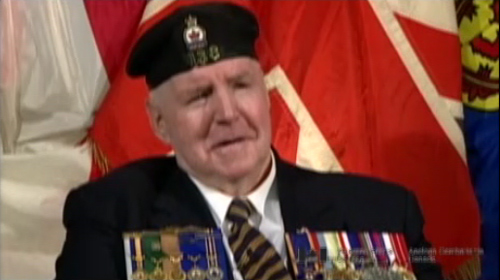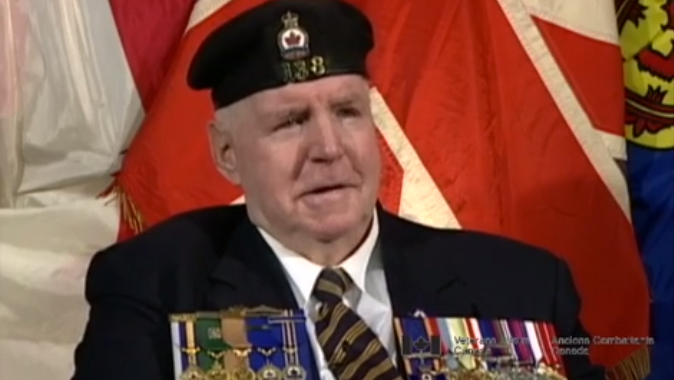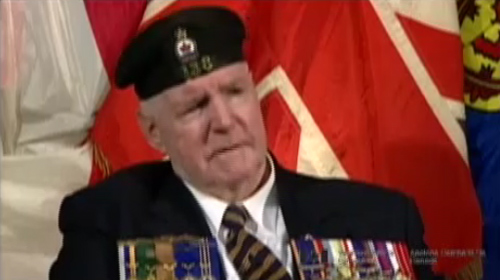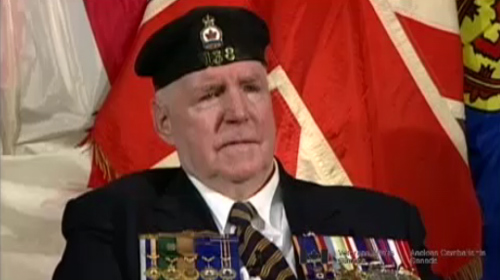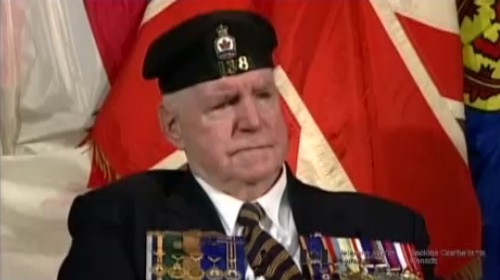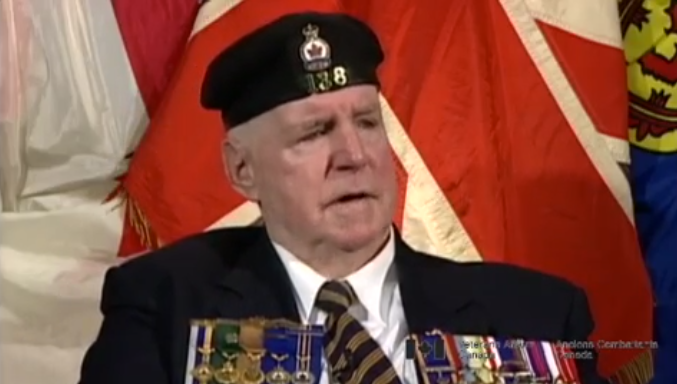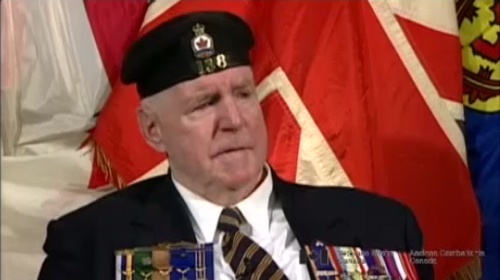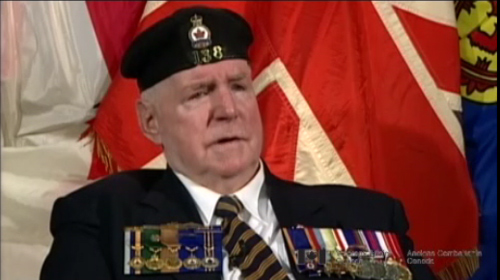Early Enlistment
Heroes Remember
Early Enlistment
Transcript
Description
Mr. Gray discusses his eventual enlistment in the Royal Canadian Navy and the Navy’s impact in wartime Halifax.
Earl Gray
Mr. Gray was born in Sydney, Nova Scotia, on May 6, 1924. As a child, he lived in poverty, despite the fact that some of his family worked in the local steel mill. Although there was a large naval presence in Sydney early in the war, Mr. Gray enlisted in the army, only to be released as an under aged recruit. Six months later, he successfully enlisted in the Royal Canadian Navy. He first experienced life at sea aboard the HMCS St.Croix, a destroyer assigned to convoy duty. After four voyages, Mr. Gray joined the minesweeper HMCS Vegreville, whose responsibility it was to sweep mines between Nova Scotia and Newfoundland. After joining the 31st Minesweeping Flotilla in Portsmouth, England, HMCS Vegreville took part in the sweep of the English Channel as part of the D-Day assault. After the war ended, Mr. Gray was married within a month of his return home. He still resides in Sydney, Nova Scotia.
Meta Data
- Medium:
- Video
- Owner:
- Veterans Affairs Canada
- Duration:
- 3:14
- Person Interviewed:
- Earl Gray
- War, Conflict or Mission:
- Second World War
- Location/Theatre:
- Canada
- Branch:
- Navy
- Units/Ship:
- HMCS St. Croix
- Rank:
- Able Seaman
- Occupation:
- Deck Crew
Related Videos
- Date modified:



